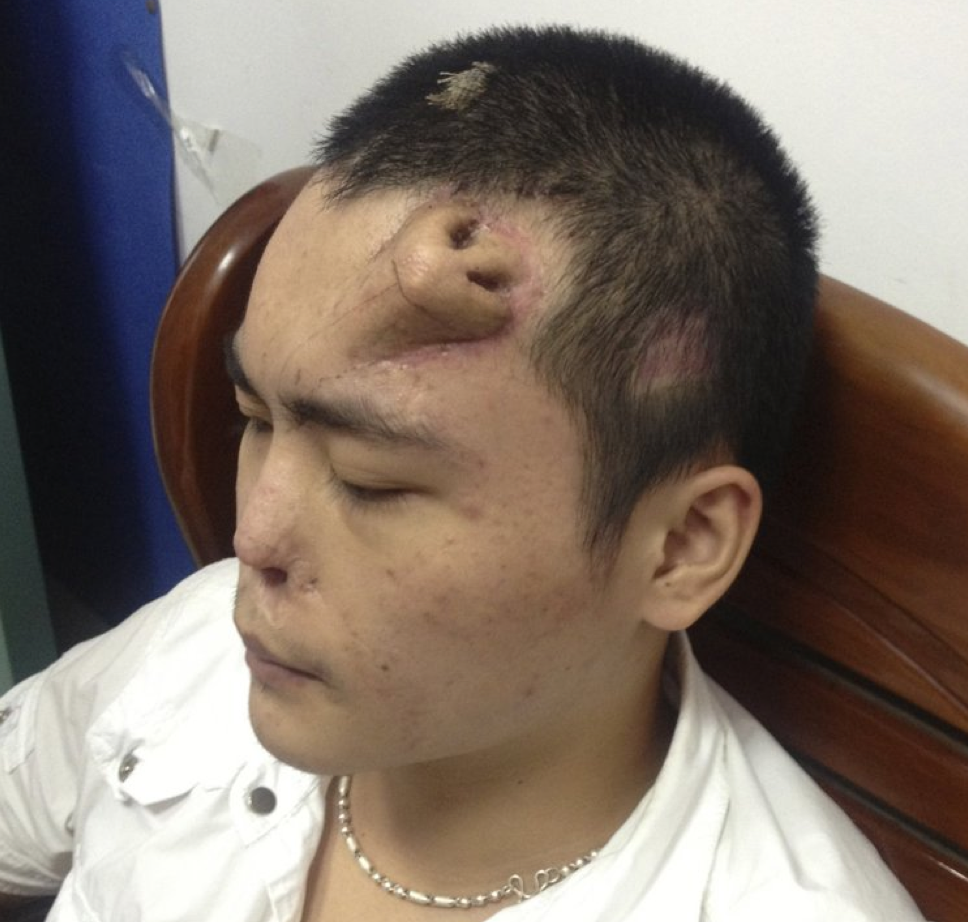A Chinese Plastic Surgeon recently announced that he was rebuilding a patient's nose on his forehead. Find out what if this is actually possible or if this is fake.
Chinese surgeon, Guo Zhihui, recently made headlines this week after a press conference held with media showing a 22 year-old man who lost much of his nose in an accident and subsequent infection with what looked like another nose on his forehead.

The Associated Press even interviewed a professor of nanotechnology and regenerative medicine who wasn't quite sure why the Chinese surgeon was building a new nose on the forhead:
Alexander Seifalian, a professor of nanotechnology and regenerative medicine at University College London who has worked on transplants using stem cells, said implanting the nose graft in the forehead makes sense because the skin there has the same "structure and texture" as that of a nose.
However, he said it was unclear why the Chinese team built the nose on the forehead rather than in its proper position. A nose graft grown from stem cells would be prepared on another body part first, but this operation is using existing cartilage, Seifalian said.
"They could have made the nose and just put it on the nose, not in the forehead," Seifalian said. "I don't know why they put it there."
Some people may be wondering if this is all a hoax. Afterall, the photos are pretty surreal looking.
Having reviewed the photos and video of the press event I can say that this does appear to be quite legitimate. In fact, the basic principles being used are fairly commonly used to repair nasal skin cancer wounds.
The so-called Forehead Flap is an excellent way to move new skin onto the nasal tip to replace skin removed during cancer surgery. This method can also be used to rebuild a nose damaged from an accident. It looks like this Chinese man's nose is missing quite a bit of cartilage. Reports suggest that he developed an infection after his accident that further destroyed his cartilage.
Noses are often built with cartilage grafts -- this is forms the backbone of many rhinoplasty procedures. However, if a nose is missing a skin lining and blood supply cartilage can not just be placed without a proper cover.
Dr. Zhihui is using the principle of the forehead flap and modifying it for this patient's situation. The doctors have gone through several stages with the reconstruction over the last nine months. One of the first things they did was to place a tissue expander on the forehead to stretch and expand the skin there. They then used rib cartilage to create a nasal framework under the forehead skin. Lastly, new nostril openings were created.
Over time the forehead skin and soft tissue will send new blood vessels into the cartilage framework allowing the whole unit to be rotated down into proper place at the patient's nasal tip. The surgeons will leave a bridge of skin attached to the forehead for several weeks and then divide this connection once new blood vessels grow into the new nasal tip from the nasal area itself.


